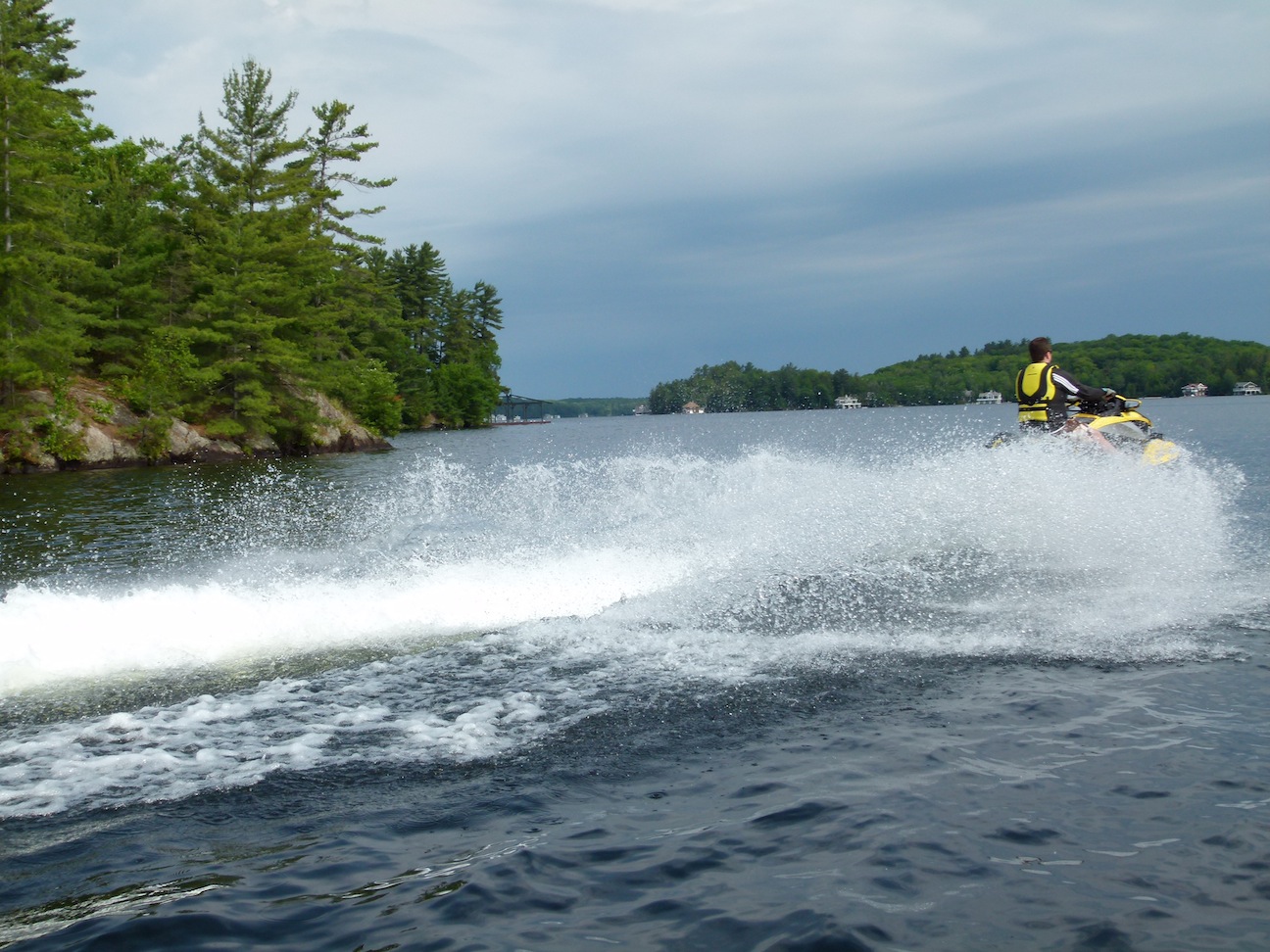Weather Can Make or Break Your Ride…
Related: Weather Protection Riding Tips
Why do you need this PWC weather advice? Because being weather-wise is a major factor. It helps determines if you go on a self guided Sea-Doo tour on your Sea Doo, jet ski or waverunner personal watercraft in Ontario and throughout Canada. Same goes for recreational boaters. Plus, there are many other tips.
Obviously, optimum jet ski cruising occurs on a hot, sunny day with little wind and not a cloud in the sky. I’ve had my fair share of these glass surface days. That’s when my Sea-Doo watercraft etches a virgin line across a mirror of water. I’ve also had Sea Doo rides where I’ve had to wear weather protection gear. Or decided to cancel because of thunderstorms or winds blowing too strong. Here’s my PWC weather advice to help experienced jet ski riders or PWC beginners embarking on Sea Doo adventures to avoid bad weather.
Weather Advice For Sea Doo Tours: Storms…
Believe me, you never want to be out there jet ski riding when severe storms are imminent. No PWC ride is worth putting yourself in potential danger. If you are out and the sky goes black and ominous, seek shelter quickly. Preferably at a marina or cottager’s dock. There you can get off your jet ski onto solid ground and under shelter until it’s over.
Weather Advice For Sea Doo Tours: Rain…
I just wish the weather folks would get it right more often. Or even agree with one another on one forecast. Basically, I’ll go on a jet ski day ride if the chance of rain is 40% or less. Anything over 50% and that day’s ride occurs near my cottage where scrambling home is an easy option.
Sometimes, rain is predicted for later in a Sea Doo riding day. That’s when I’ll choose a quick, half-day PWC adventure (early mornings are normally the calmest time of day). And hopefully, be off the water by noon or so. But sometimes, I get caught in the rain and so, here are my rain riding tips.
Weather Advice For Sea Doo Tours: Wind…
I also watch the wind closely. Higher winds mean higher waves. They can slow my jet ski ride or make it difficult, especially on big water. On windy days, I’ll choose a more protected route like a river or other narrow waterway. Regardless, it’s good to know as much as possible about the many effects of wind.
The direction of the wind is also important. If your selected waterway is narrow, and its length coincides with the direction of the wind. For instance, if both run west to east, then that can really whip up the waves along that restricted confine. But if the wind is blowing across its width, you’ll be somewhat protected by the tight shorelines for Sea Doo riding.
Weather Advice For Sea Doo Tours: Good Temperature…
Temperature is another factor to watch while Sea Doo riding. For me, if the mercury is 22˚C (71.6˚F) or less, it’s a long sleeve and pants or even a wetsuit-riding day. I’ve gone on a Sea-Doo ride when it seemed that ice would start forming on the surface. And I’ve almost had heat prostration from being out all day in a 33˚C (92˚F) clam bake, with me as the clam. But mostly, the weather cooperates when I jet ski ride because I’m on top of it. But just in case, check out my dressing warm tips.
Weather Advice For Sea Doo Tours: Information…
Before each Sea Doo ride, visit these sites to prepare yourself for the vagaries of Mother Nature: Ontario forecast; marine forecast; National Date Buoy Centre; Sailflow; local Ontario weather radar; U.S. weather radar.
My point is that for jet ski day touring and other PWC adventures, you need to be weather wary. And ready to change plans or course quickly if needed.
If you enjoyed this post, check out my other Sea Doo riding tips.
The tips and advice in this article are the opinions of the author, may not work in every situation and are intended only for the convenience and interest of the reader, who has the personal responsibility to confirm the validity, accuracy and relevancy of this information prior to putting it to their own use.



